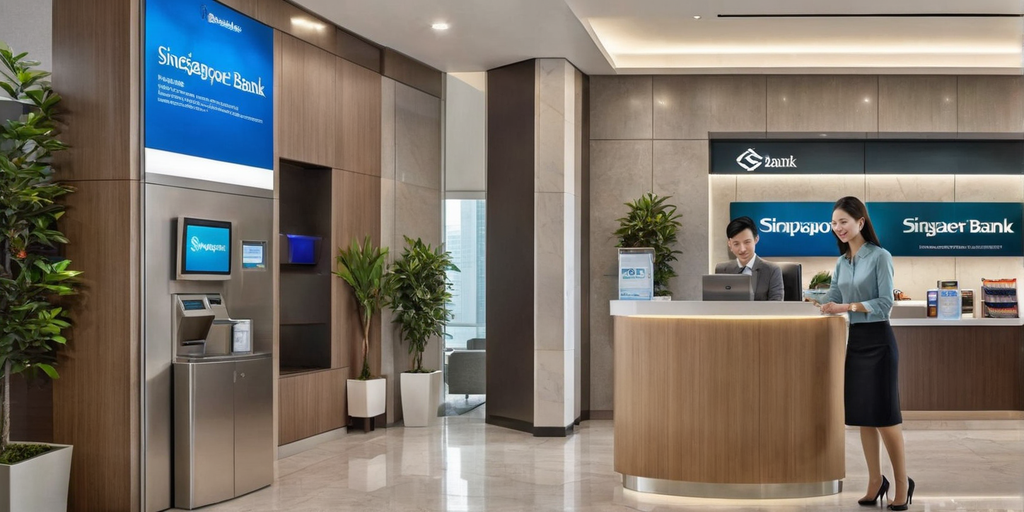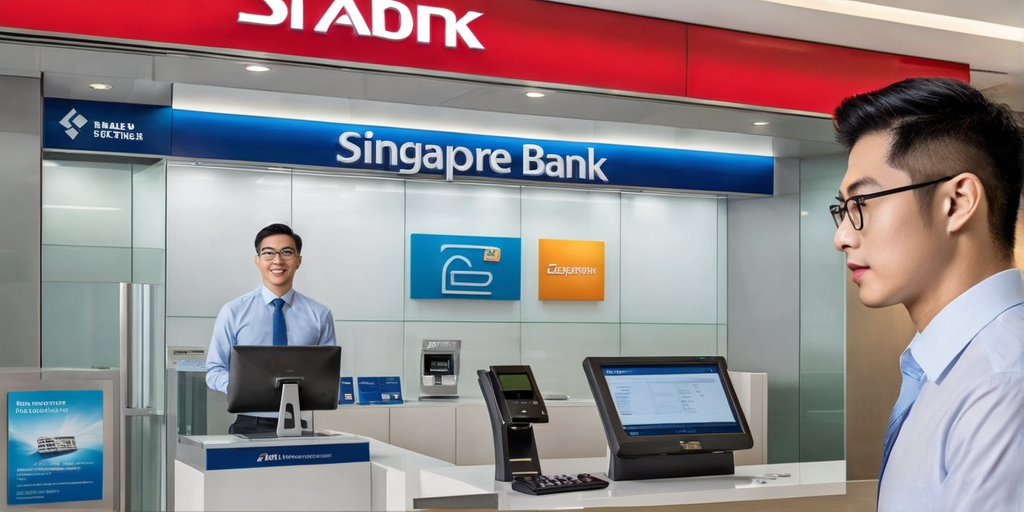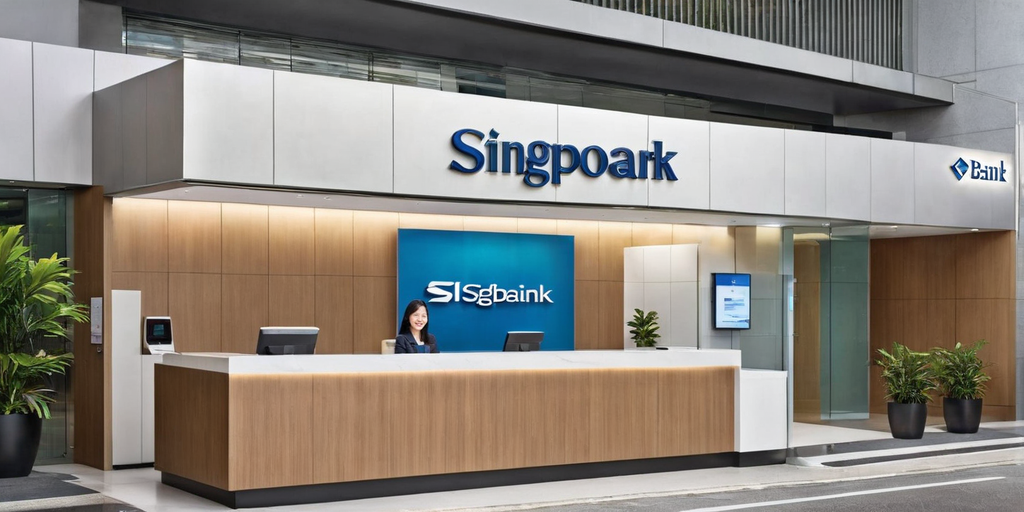If you’re a homeowner in Singapore, you’re likely to have a housing loan to finance your property. It’s important to understand the different options available to you for paying off your loan and managing your finances. In this article, we’ll take you through the process of paying your housing loan in Singapore, from understanding your options to planning ahead with CPF.

Firstly, it’s important to understand the different types of housing loans available in Singapore. The most common type is an HDB loan, which is offered by the Housing and Development Board. Alternatively, you may have taken out a bank loan to finance your property. Understanding the differences between these options is crucial, as it can affect your eligibility and application process, as well as your financing and repayment options.
Once you have a housing loan, you’ll need to make monthly payments to repay the loan amount and interest. There are several ways to make these payments, including using your CPF funds, cash, or GIRO. It’s important to understand the pros and cons of each payment method and choose the one that works best for your financial situation. By following these steps, you can ensure that you’re paying off your housing loan in a responsible and sustainable way.
Key Takeaways
- Understand the different housing loan options available in Singapore, including HDB loans and bank loans.
- Choose the best payment method for your financial situation, whether it’s using CPF funds, cash, or GIRO.
- Plan ahead with CPF to ensure that you’re managing your finances effectively and making the most of your housing investment.
Understanding Your Housing Loan Options

Are you looking to buy a house in Singapore? One of the most important decisions you will make is choosing the right housing loan option. It’s important to understand the different loan options available to you, so you can make an informed decision that works best for your financial situation.
HDB Loan Versus Bank Loan
When it comes to housing loans, there are two main options: HDB loans and bank loans. HDB loans are provided by the Housing and Development Board, while bank loans are offered by various financial institutions.
HDB loans are generally considered a safer option, as they offer lower interest rates and more flexible repayment plans. However, they are only available for HDB flats and have strict eligibility criteria. On the other hand, bank loans are available for both HDB flats and private properties, but they come with higher interest rates and stricter repayment plans.
Assessing Interest Rates and Loan Terms
When choosing a housing loan, it’s important to assess the interest rates and loan terms carefully. Interest rates determine how much you’ll be paying in interest over the course of your loan, so it’s important to choose a loan with low interest rates.
Loan terms refer to the length of time you have to repay your loan. The longer the loan term, the lower your monthly payments will be, but the more interest you’ll end up paying in the long run. It’s important to choose a loan term that works for your financial situation.
In conclusion, choosing the right housing loan option is crucial when buying a house in Singapore. By understanding the different loan options available to you and assessing the interest rates and loan terms, you can make an informed decision that works best for your financial situation.
Eligibility and Application Process

Criteria for HDB and Bank Loans
Before you can apply for a housing loan in Singapore, you need to meet certain eligibility criteria. For HDB loans, you must be a Singaporean citizen or a permanent resident. For bank loans, you must be a Singaporean citizen or a permanent resident, and you must meet the income and credit score requirements set by the bank.
In addition to meeting the eligibility criteria, you will also need to have enough funds to cover the legal fees and stamp duty associated with the purchase of your new home. Legal fees typically range from $2,000 to $3,000, while stamp duty can be as high as 4% of the property’s purchase price.
Navigating the Application Steps
Once you have confirmed your eligibility and have the necessary funds to cover the legal fees and stamp duty, you can begin the application process. The first step is to obtain a Singpass, which is a unique login ID that allows you to access various government e-services in Singapore.
Next, you will need to visit an HDB branch or a bank to apply for your housing loan. During the application process, you will be required to provide documentation such as your NRIC, income statements, and credit score reports.
If you are approved for the loan, you will then need to sign the loan agreement and pay the legal fees and stamp duty. After this is done, you can then proceed with the purchase of your new home.
Overall, obtaining a housing loan in Singapore can be a complex process, but with the right preparation and guidance, you can successfully navigate the application steps and secure the funding you need to purchase your dream home.
Financing Your Home Purchase

Congratulations on your decision to purchase a home in Singapore! Now, let’s talk about how to finance your purchase.
CPF Usage for Home Loans
The Central Provident Fund (CPF) is a mandatory social security savings scheme for Singaporeans and Permanent Residents. You can use your CPF savings to pay for your home purchase.
Your CPF Ordinary Account (OA) can be used to pay for your home loan monthly instalments. However, do note that there are limits to how much you can use from your CPF OA. The maximum amount you can use is the lower of:
- The monthly instalment payable; or
- 30% of your monthly income.
You can also use your CPF OA to pay for your downpayment. The maximum amount you can use is:
- 15% of the purchase price if the loan-to-value (LTV) ratio is 80% or lower; or
- 10% of the purchase price if the LTV ratio is above 80%.
To use your CPF OA for your home loan, you need to submit a CPF withdrawal form to your bank or financial institution.
Cash and CPF Downpayment
In addition to using your CPF OA, you will also need to pay a downpayment in cash and/or CPF. The downpayment is a percentage of the purchase price and varies depending on whether the property is a HDB flat or private property.
For HDB flats, the downpayment is 10% of the purchase price. You can use your CPF OA to pay up to 15% of the purchase price and the remaining 5% must be paid in cash.
For private properties, the downpayment is 25% of the purchase price. You can use your CPF OA to pay up to 15% of the purchase price and the remaining 10% must be paid in cash.
When you make an offer to purchase a property, you will also need to pay an Option Fee. The Option Fee is typically 1% of the purchase price and can be paid in cash and/or CPF.
In summary, financing your home purchase in Singapore involves using your CPF savings and paying a downpayment in cash and/or CPF. Make sure to check the limits on CPF usage and downpayment requirements for the type of property you are purchasing. Good luck with your home purchase!
Making Monthly Payments

Paying your monthly housing loan instalments is an important financial responsibility that you need to keep up with to avoid late payment fees and other penalties. Fortunately, there are several ways to make your payments, so you can choose the one that works best for you. Here are some options:
GIRO and Other Automated Payments
One of the most convenient ways to make your monthly housing loan payments is through GIRO. This is an automated payment system that deducts your payment from your bank account on a predetermined date each month. To set up GIRO, you will need to fill out a form and submit it to your bank. Once your GIRO application is approved, your monthly payments will be deducted automatically, so you don’t have to worry about missing a payment.
Apart from GIRO, there are other automated payment modes that you can use to make your monthly payments. For instance, you can use PayNow via SGQR, eNETS Debit, or internet banking. These payment modes are fast, secure, and convenient, and they allow you to make your payments from the comfort of your home.
Alternative Payment Modes
Apart from automated payment modes, you can also make your monthly housing loan payments through other payment channels. For instance, you can use AXS channels, which include AXS Station (Kiosk), AXS e-Station (Online), and AXS m-Station (Mobile application). These channels allow you to make payments using cash, NETS, or credit/debit cards.
If you prefer to pay in cash, you can use Cash Payment Kiosks at selected HDB branches. These kiosks are available 24/7, and you can use them to make your payments quickly and conveniently.
In summary, there are several ways to make your monthly housing loan payments in Singapore. Whether you prefer automated payment modes like GIRO and PayNow, or alternative payment modes like AXS channels and cash payment kiosks, you can choose the one that works best for you. Just make sure to keep up with your payments to avoid late payment fees and other penalties.
Additional Financial Considerations

When it comes to paying off your housing loan in Singapore, there are a few additional financial considerations to keep in mind. In this section, we’ll go over how to handle partial capital repayment and how to deal with late payment charges.
Handling Partial Capital Repayment
If you have extra cash on hand and want to make a partial capital repayment on your housing loan, you can do so. This means that you can pay off a portion of your outstanding loan amount before the end of your loan tenure. However, it’s important to note that there may be penalties for early repayment, so be sure to check with your lender before making any payments.
Dealing with Late Payment Charges
If you miss a housing loan payment, you may be charged a late payment fee. These charges can add up quickly, so it’s important to make your payments on time. If you’re having trouble making your payments, contact your lender as soon as possible to discuss your options.
Late payment charges in Singapore typically range from 1% to 7.5% per annum, depending on the lender and the terms of your loan. To avoid these charges, set up automatic payments or reminders to ensure you never miss a payment.
In summary, make sure to stay on top of your housing loan payments to avoid late payment charges. If you have extra cash on hand, consider making a partial capital repayment to reduce your outstanding loan amount. By keeping these additional financial considerations in mind, you can stay on track with your housing loan payments and avoid unnecessary fees.
Planning Ahead with CPF

When it comes to paying off your housing loan in Singapore, planning ahead with your CPF (Central Provident Fund) can help you maximise your savings and reduce your financial burden. Here are some ways you can make the most of your CPF to pay off your housing loan.
Maximising CPF OA for Loan Repayment
Your CPF Ordinary Account (OA) savings can be used to pay for your housing loan. You can use up to the maximum amount of your CPF OA savings, subject to the CPF Housing Limits and the remaining lease of your property. To check the available sum you can use for your housing payment, you can use the CPF Housing Calculator available on the CPF website.
If you have enough CPF OA savings to pay off your housing loan, you can make a full repayment to reduce your interest cost. Alternatively, you can make partial repayments to reduce your monthly instalments. To make a partial or full repayment of your housing loan, you will need to seek approval from your housing loan financier. You can also set up a CPF GIRO arrangement to make regular repayments from your CPF OA to your housing loan.
Understanding CPF Accrued Interest
When you use your CPF OA savings to pay for your housing loan, your savings will continue to earn CPF accrued interest. This interest will be credited to your CPF OA and can be used to pay for future housing payments or other CPF-approved uses, such as retirement or healthcare expenses.
It is important to note that CPF accrued interest is not paid in cash and cannot be withdrawn. Instead, it is used to offset the interest payable on your housing loan. This means that the interest payable on your housing loan will be lower than the interest rate charged by your housing loan financier.
To maximise your CPF accrued interest, you can consider setting aside your CPF OA savings for your housing payment and using cash to pay for other expenses. This will allow your CPF OA savings to earn more interest and help you save for your retirement. You can also check the CPF website for information on the Basic Retirement Sum and how much you need to save for your retirement.
By planning ahead with your CPF, you can make the most of your savings and reduce your financial burden when it comes to paying off your housing loan in Singapore.
Securing Your Investment

Congratulations on securing your housing loan! Now that you have purchased your dream home, it’s important to protect your investment. In this section, we’ll discuss the Home Protection Scheme (HPS) and how it can help safeguard your home.
Home Protection Scheme (HPS)
HPS is a mortgage-reducing insurance scheme that protects your loved ones from losing their home in the event of unforeseen circumstances such as death, terminal illness, or total permanent disability. HPS is mandatory for all HDB flat buyers who use their CPF savings to pay for the monthly instalments of their housing loan.
Under HPS, your outstanding housing loan will be fully paid off in the event of your death or total permanent disability. In the event of terminal illness, the outstanding housing loan will be paid off up to a maximum of $100,000. This will help to ensure that your loved ones are not burdened with the responsibility of repaying the outstanding housing loan.
To apply for HPS, simply fill in the HPS application form (PHS9) and submit it to the Central Provident Fund (CPF) Board. You can also apply for HPS through your HDB loan officer or your bank.
In conclusion, HPS is an important insurance scheme that helps to protect your investment in your home. By ensuring that your outstanding housing loan is fully paid off in the event of unforeseen circumstances, you can have peace of mind knowing that your loved ones will not be burdened with the responsibility of repaying the outstanding housing loan.
Final Steps in Loan Redemption

Congratulations! You have successfully paid off your housing loan in Singapore. Now, you are ready to complete the redemption process. Here are the final steps you need to take:
Completing the Redemption of Housing Loan
- Obtain a redemption statement from your financier. This statement will show the amount you need to pay to fully redeem your housing loan. You can get this statement from your financier’s website or by contacting their customer service hotline.
- Pay the redemption amount. You can use your CPF savings to make the payment. If you are using your CPF savings, you need to ensure that you have sufficient CPF Ordinary Account savings for the repayment, subject to the housing limits. There are housing limits on the amount of CPF savings you can use. You can also pay the redemption amount using cash or cheque.
- Once you have paid the redemption amount, your financier will release the property title to you. You can collect the title deed from your financier or from your lawyer.
- Update your property ownership details. You need to update your property ownership details with the relevant authorities, such as the HDB or the Land Transport Authority. You can do this online through the HDB website or through My HDBPage.
- Keep the redemption statement and the title deed in a safe place. These documents are important proof of your ownership of the property.
By completing these final steps, you have successfully redeemed your housing loan in Singapore. You can now enjoy the peace of mind that comes with owning your own property.
Maintaining Your HDB Flat

Owning an HDB flat is a significant investment, and it’s essential to keep it in good condition to maintain its value. Here are some tips to help you maintain your HDB flat:
Regular Upkeep
Regular upkeep of your HDB flat is crucial to ensure that it remains in good condition. This includes cleaning, painting, and repairing any damages. You should also ensure that all appliances and equipment are in good working condition. Regular upkeep not only helps to maintain the value of your flat but also ensures that it is safe and comfortable to live in.
Valuation Price
The valuation price of your HDB flat is an important factor to consider when paying off your housing loan. The valuation price is the estimated market value of your flat, and it determines the amount of loan you can get from a licensed money lender. It’s essential to keep your flat in good condition to maintain its valuation price. Regular upkeep and maintenance can help to increase the value of your flat.
It’s also important to note that the valuation price of your HDB flat can be affected by external factors such as the location, surrounding amenities, and the demand for private property in the area. Keeping your flat in good condition can help to mitigate the impact of these external factors on its valuation price.
Maintaining your HDB flat is essential to ensure that it remains in good condition and maintains its value. Regular upkeep and maintenance can help to increase the value of your flat and ensure that it is safe and comfortable to live in.
Conclusion

Congratulations! You have now learned some great tips and strategies for paying off your housing loan in Singapore. By following the steps outlined in this article, you can take control of your finances and pay off your loan more quickly and efficiently.
Remember, it’s important to always stay on top of your loan payments and to make sure that you are budgeting properly. By doing so, you can avoid falling into debt and ensure that you are able to enjoy your new home for many years to come.
If you have any questions or concerns about your home loan in Singapore, don’t hesitate to reach out to your lender or financial advisor for guidance. With their help and support, you can achieve your financial goals and enjoy the peace of mind that comes with being debt-free.
Thank you for reading this article. We hope that you found it helpful and informative. If you have any feedback or suggestions for future articles, please let us know. We are always looking for ways to improve our content and provide our readers with the best possible information.
Frequently Asked Questions

What are the steps to make an HDB loan payment online?
To make an HDB loan payment online, you can use methods such as CPF via My HDBPage, GIRO via My HDBPage, PayNow via SGQR, eNETS Debit, internet banking, AXS Channels, or cash payment kiosks.
Can I fully settle my HDB loan using my CPF savings, and is it advisable?
Yes, you can use your CPF savings to fully settle your HDB loan. However, it’s advisable to consider factors such as your retirement needs and the accrued interest on the CPF funds used for the housing loan.
How do I manage my HDB rental payments through the internet?
You can manage your HDB rental payments through various online methods including CPF via My HDBPage, GIRO via My HDBPage, PayNow via SGQR, eNETS Debit, internet banking, AXS Channels, or cash payment kiosks.
What’s the process for checking my HDB loan balance?
To check your HDB loan balance, you can utilise online platforms such as My HDBPage or visit the official HDB website to access relevant information regarding your loan balance.
Is it possible to utilise CPF funds to cover my housing mortgage?
Yes, it is possible to utilise CPF funds to cover your housing mortgage. However, it’s important to consider the impact on your retirement savings and the accrued interest on the CPF funds used for the housing loan.
How do I ensure my home loan payments are made on time each month?
To ensure your home loan payments are made on time each month, you can set up automatic payments via methods such as GIRO, PayNow, or utilise the various online banking platforms provided by participating banks.

